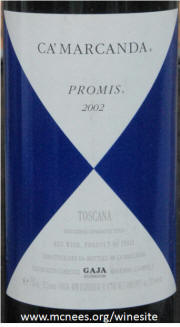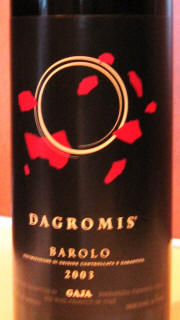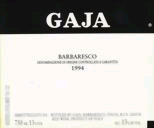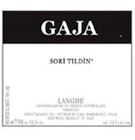Visiting our Destin, FL vacation rental, we had carry out pizza and pulled from the remote vacation home cooler this hearty premium Barbaresco (Nebbiolo).
As is the case with a DOCG Barbaresco, this is 100% Nebbiolo. This is a single vineyard designated bottling named for the 30 acre Martinenga estate vineyard in the commune of in the Piedmont region that has been owned by Marchesi di Grésy since 1797.
Proprietor Alberto di Gresy spent his childhood on the estate and learned the intricacies of the site, its soil and their products. Alberto began producing the wines of Tenuta Cisa Asinari of Gresy in 1973. Today the winemaker is Matteo Sasso.
The Cisa Asinari estates of the Marchesi di Grésy are part of Piedmontese winemaking history as their roots date back to the end of the 18th century, but it was Alberto di Grésy, in 1973, who founded the Marchesi di Grésy winery, as we know it today.The Martinenga. vineyard covers 30 acres in the shape of an amphitheatre, with Asili to the west and Rabaja to the north-east. Facing south-southwest, the vineyards have a favourable microclimate enabling the production of high quality grapes even in potentially difficult vintages. The vineyards are situated at 280 metres above sea level, and the soil is calcereous, with blue marl and a small percentage of sand.
Annual production is 15,000 - 20,000 bottles per year. For this release, 1,625 cases were made, 550 cases imported.
Winemaker notes - The Marchesi di Gresy “Martinenga” Barbaresco 2019 has a fine, gently floral nose with wild cherry and redcurrant fruit. Spicy and lifted with notes of dried herbs. More sour cherry fruit on the palate, which combines richness and structure with dried fruit characters. Fresh acidity gives balance, and the finish is complex, savoury and textured with integrated oak.”“Hand-harvested in early October. Ideal yield is no more than 6 tons per hectare. Vinification on skins - 8-10 days fermentation with floating cap followed by 20-30 days maceration with submerged cap, and daily pumping over. Malolactic fermentation is carried out at controlled temperature following alcoholic fermentation. The wine is aged in 225 litre French oak barriqes for 12 months and then 50 hl Slavonian oak casks for a further 12 months. Further ageing in bottle before release.”
Nebbiolo is the primary grape of wines from two Italian wine regions, Barbaresco and Barolo. Nebbiolo ripens earlier in Barbaresco than in Barolo, primarily due to the vineyards’ proximity to the Tanaro River and lower elevations. While the wines there are still powerful, Barbaresco expresses a more feminine side of Nebbiolo, often with softer tannins, delicate fruit and an elegant perfume.
Nebbiolo, named for the ubiquitous autumnal fog (called nebbia in Italian), and is the primary varietal grape of northern Italy’s Piedmont region. Grown throughout the area, as well as in the neighboring Valle d’Aosta and Valtellina, it reaches its highest potential in the Piedmontese villages of Barolo, Barbaresco and Roero.
This wine was rated 93 points by both James Suckling and Wine Spectator, Jeb Dunnuck 92 Points, and Vinous and Kerin O'Keefe 90 points.
Dark opaque ruby colored, medium bodied, structured but smooth, polished, sleek red cherry and berry fruits with notes of floral, clove and cinnamon spice, black tea and hints of smoke and creosote turning to soft moderate tannins on the finish.
RM 91 points.

























